Op-amp is short for operational-amplifier. You can use it as a comparator, buffer a signal, or amplify a signal.

Table of Contents
- Op-amp as a comparator
- Op-amp behavior described by a formula
- Voltage follower
- Popular op-amp circuits
- Popular op-amps
- Where to buy
- Video
These are some op-amps I have; they are the LM358 and the LM4562. The first is a generic op-amp and the second one is designed for audio purposes. Both however, have the same pin-out and should work roughly the same in identical circuits.
The same goes for many other models and brands, but not all. So, always check the datasheet.
There are two op-amps in this IC, each with a positive and negative input terminal and an output. The positive and negative power supplies are shared by both.
Op-amp as a comparator
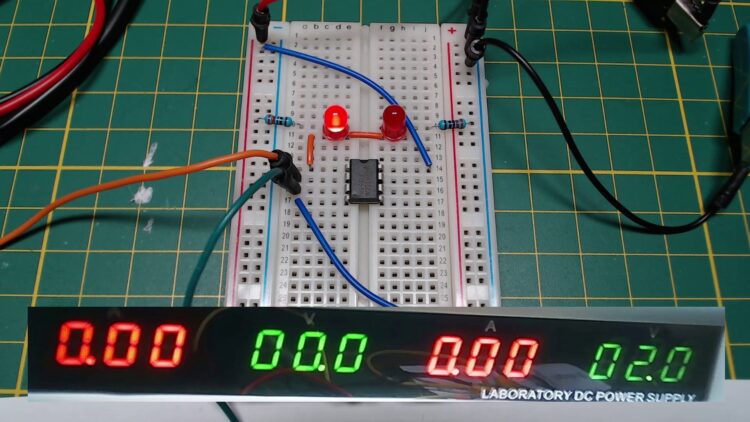
This is a simple circuit that drive two LED s to indicate whether the output signal of the op-amp is high or low.
I have made my power supply output two separate voltages that go to the input pins.
You can see the output of the op-amp change as soon as the inputs switch places in order of voltage level.
Op-amp behavior described by a formula
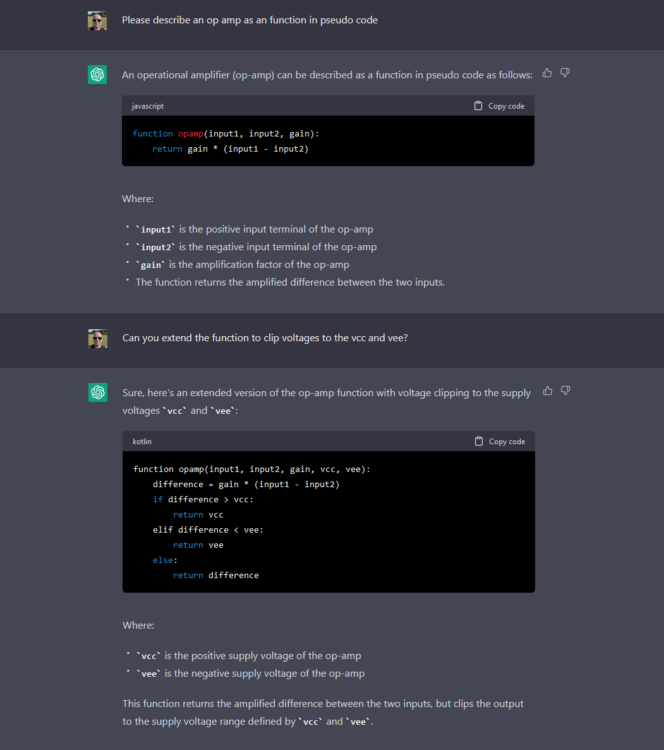
We can describe the working of the op-amp as a formula.
output = (positive_input - negative_input) * gain
Because the gain of the op-amp is often a number in the millions, any voltage difference between the inputs gets multiplied to a very large voltage.
The op-amp however can not deliver more than we feed it, so the output voltage gets clipped.
Voltage follower

If the voltage difference gets just as small as the gain factor is large, then the op-amp can output an analog voltage instead of just high or low. Like in this circuit here.
The output is directly connected to the negative input pin. Which causes the output to follow the voltage of the positive input pin. It does that not with precision, but with speed.
The output of the op-amp goes to the negative input.
My power supply goes to the positive input, and I initially set it to 1 volt.
The output starts at ground.
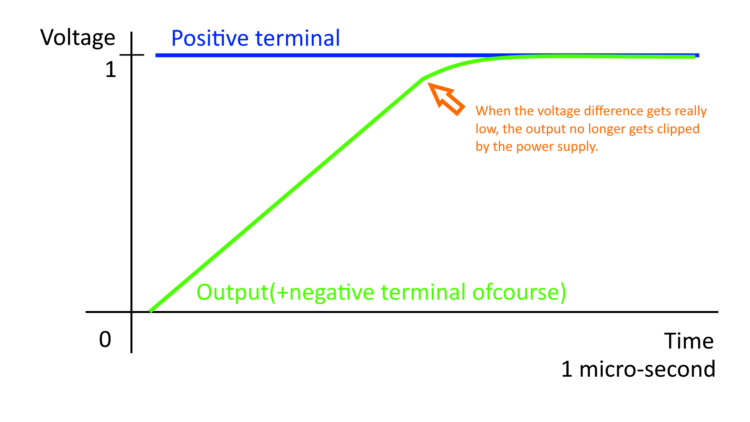
Voltage difference between the pins is 1 volt positive, multiplied by the gain of 10 million is … ten million volts. The op-amp does not have that … obviously, so it sends 5 volts.
Now for the fun part.
The output takes time to get to 5 volts. And the op-amp is really fast.As the voltage shoots up, the calculation is updated, over a million times a second.
Once it gets within a fraction of a volt of the positive terminal, the equation starts to calm down, outputting less and less as it approaches its target. From that point on, the output sticks to the positive terminal like glue, mirroring every change in voltage.
Because the equation can also handle a negative difference, the op-amp could just as easily start at 5 volts output instead of ground.
The output voltage will always run towards the positive voltage and stop just in time.
Popular op-amp circuits
Here are some of the most popular op-amp circuits used by electronics hobbyists:
- Non-inverting Amplifier: A basic op-amp circuit that amplifies the input signal while preserving its phase.
- Inverting Amplifier: An op-amp circuit that amplifies the input signal while reversing its phase.
- Summing Amplifier: An op-amp circuit that combines multiple input signals into a single output.
- Difference Amplifier: An op-amp circuit that amplifies the difference between two input signals.
- Instrumentation Amplifier: An op-amp circuit used for low-level signals, such as those from sensors.
- Voltage Follower: An op-amp circuit that provides a high impedance input and a low impedance output, allowing it to be used as a buffer.
- Comparator: An op-amp circuit used to compare two input voltages and provide a digital output indicating which is higher.
- Schmitt Trigger: An op-amp circuit that provides hysteresis, making it useful for converting analog signals into digital signals.
- Integrator: An op-amp circuit that integrates the input signal over time and provides a ramp output.
- Differentiator: An op-amp circuit that differentiates the input signal and provides a pulse output.
- PWM Generator: An op-amp circuit that generates a pulse-width modulated (PWM) signal, which is commonly used for controlling the duty cycle of a switch or for providing a variable voltage source.

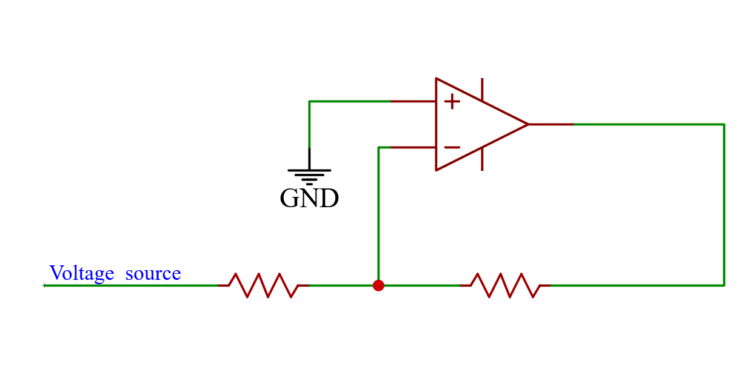
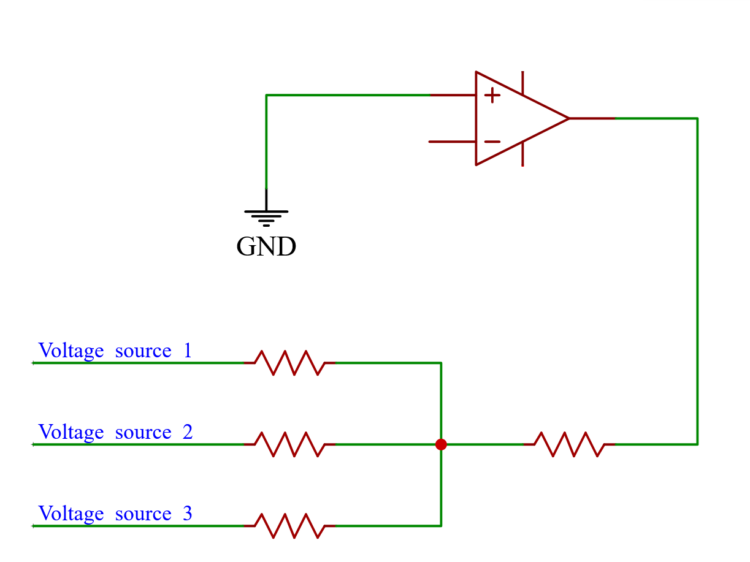
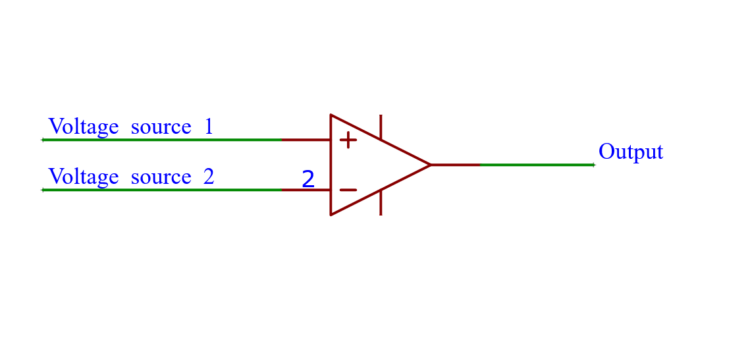
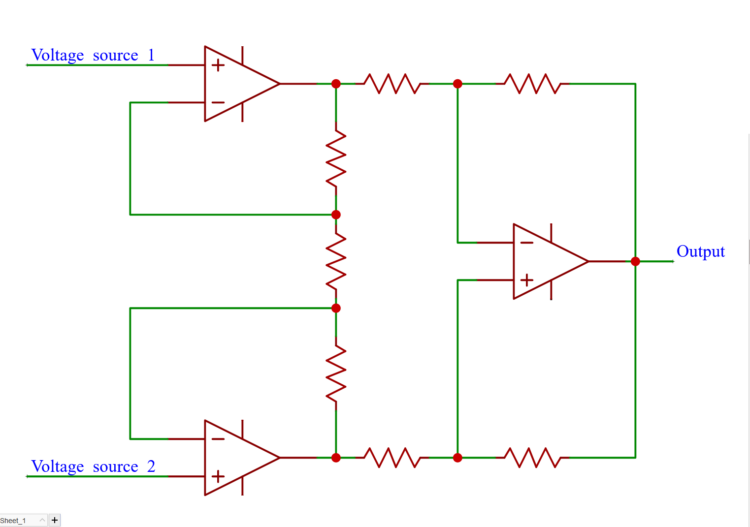

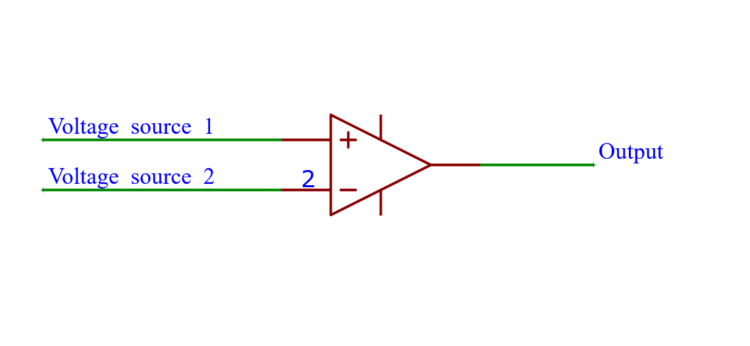
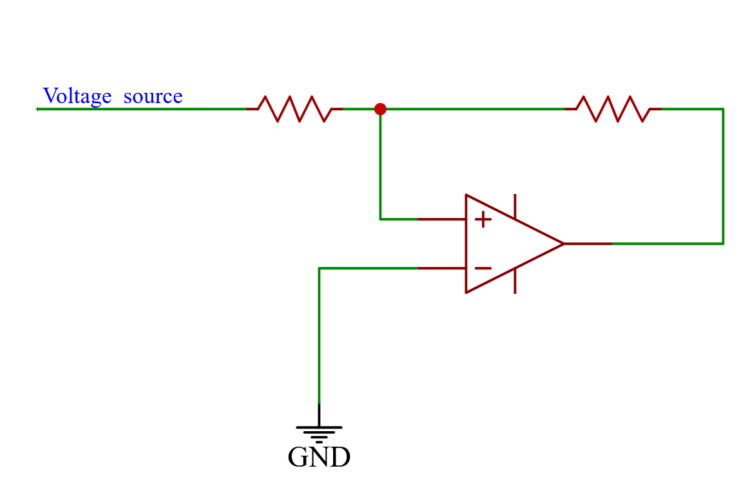
Popular op-amps
Here are the top 10 most popular op-amp ICs used by electronics hobbyists:
- LM741: A general-purpose op-amp with good stability and a wide range of operating voltage.
- LM358: A dual operational amplifier with low power consumption and a wide range of operating voltage.
- LM324: A quad operational amplifier with low power consumption and a wide range of operating voltage.
- TL084: A high-speed JFET input operational amplifier with good input characteristics.
- NE5532: A high performance dual operational amplifier with low noise and high gain.
- TL072: A high-speed JFET input operational amplifier with low input bias current.
- TL062: A low-noise JFET input operational amplifier with low input bias current.
- LM386: A low power audio amplifier that is designed for use in battery-powered applications.
- MCP6002: A low power, dual channel op-amp with rail-to-rail input and output.
- LMC6482: A low power, dual channel op-amp with rail-to-rail input and output, and a low offset voltage.
Where to buy
There are several popular places to buy op-amps, both online and offline. Some of the most popular include:
- Digi-Key: A large online electronics distributor with a wide selection of op-amps and other electronic components.
- Mouser Electronics: An online electronics distributor with a large selection of op-amps and other components.
- Amazon: An online retailer that offers a wide selection of op-amps and other electronic components, including those from major brands.
- Newark / element14: An online electronics distributor with a wide selection of op-amps and other components.
- Jameco Electronics: An online and offline electronics distributor that offers a wide selection of op-amps and other components.
- Fry’s Electronics: A large electronics retailer with physical stores in several US states, offering a wide selection of op-amps and other components.
- RadioShack: A retail chain that offers a limited selection of op-amps and other electronic components in their stores and online.
- Arrow Electronics: A global electronics distributor with a wide selection of op-amps and other components, both online and through their network of physical locations.
- eBay: An online marketplace that offers a wide selection of op-amps and other electronic components from individual sellers and businesses.
- AliExpress: An online marketplace that offers a wide selection of op-amps and other components from Chinese manufacturers and suppliers.
As always, it’s a good idea to compare prices and check for any applicable discounts or special deals before making a purchase.